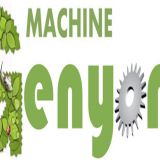Fruit should be washed in clean water, peeled and the stones removed. Washing water can be chlorinated by adding 1 teaspoon of bleach to 4.5 litres of water. All fruit should be ripe and free from bruising. Any rotten or bruise fruit should be thrown away as this will spoil the colour and flavour of the leather. Pineapple contains an enzyme that damages the skin. Therefore, gloves should be worn when handling pineapple. The puree must be heated to a higher temperature for a longer time to destroy the enzyme (it must be boiled for 20 minutes). Bananas have a low level of acidity and turn brown very rapidly after peeling and cutting. To prevent this, they should be immersed in water containing sodium metabisulphite (400 parts per million of sulphur dioxide) immediately after peeling. Soft fruit, such as berries and apricots, are delicate and should be handled carefully to avoid bruising. Only stainless steel knives should be used to chop the fruit. Other metals will discolour the fruit flesh.
B.-Preparation of the fruit:
pulp/puree At the simplest level, fruit is made into a puree by hand using a food mill
or mouli legume. If electricity is available, a liquidiser or blender can be used to increase the production output. The
liquidised fruit is strained or sieved to remove fibres, seeds etc and make a smooth puree. Fruit puree can be semi-processed and stored in sealed drums for further processing later in the season. Sulphur dioxide (SO2) (600ppm) is added to the drums to prevent the growth of microorganisms. The semi-processed fruit can be stored for several months.
C.-Added Ingredients
Chemical preservatives may be added to the fruit puree to maintain a bright colour in the leather. Preservatives are also added if the puree is to be stored before processing. A variety of ingredients can be added to the fruit puree - sugar to increase the sweetness, citric acid to increase the acidity and chopped nuts, coconut or spices to vary the taste and flavour.
D.-Heating
The puree must be heated to 90deg C to inactivate the enzymes and reduce the level of microbiological contamination. A double pan boiler is recommended for heating to avoid burning the puree.
E.-Drying
The fruit puree is poured in a thin layer (3-6mm thick) on trays . The puree can be poured into a square which is later cut into small pieces, or into small circles which are rolled up when dry. The leathers should not be dried in direct sunlight as this will cause the colour to fade and reduce the levels of vitamins A and C. Indirect solar dryers or mechanical dryers should be used. The leather should be dried overnight in a solar dryer or for about 5 hours in a mechanical dryer. After this time it is turned over and dried on the other side. The leather is dried until it has a final moisture content of 15-25%. After drying, the leathe pieces should be dusted lightly with starch to prevent them sticking together.
F.-Packaging
Fruit leather is usually sold as a roll that is interleaved with greaseproof paper to prevent it from sticking together. Strips of the leather are weighed, laid on a piece of greaseproof paper and rolled with the paper. The rolls or discs of leather are packed in polythene or polypropylene heat-sealed bags. The bags should be placed in boxes to protect them from the light. General All equipment must be thoroughly cleaned each day to prevent contamination by insects and micro-organisms. 4.-Batch Preparation Each batch of leather is prepared the same way to ensure consistency of quality. The flavour of fruit leather is improved by adding lime or lemon juice to the puree to increase the acidity. This also helps with preservation. The fruit may be mixed with semi-ripe banana pulp, which increases the level of solids in the mix. This reduces the cost of the product and reduces the drying time. Other ingredients, such as sugar and nuts may also be added according to taste.
Fruit leather recipes
The following basic recipes are only guidelines since they depend on the composition of fruit (which varies between different types) and the different consumer tastes for sweetness.
MangoLeather Reference:
Fully ripe mango Sugar - 10-15% the pulp weight according to the variety used and consumer taste Lemon juice or citric acid - 2 spoons per kg pulp Sodium of potassium metabisulphite - 2g per kg pulp Glycerine for foods
1. Wash the mangoes in clean water. Drain. Sort and remove any unripe or over-ripe fruit.
2. Peel the fruit with a stainless steel knife and cut the flesh into small pieces.
3. Extract the pulp using a pulper.
4. Weigh the pulp and mix with the sugar, lemon
juice and metabisulphite in the ratios above.
5. Heat at 70-80°C until a final solids content of %.
6. Remove the foam from the top of the mixture. Grease the surface of trays with glycerine to prevent the leather from sticking.
7. Pour the hot puree onto the trays at a ratio of 15kg per square metre of tray area.
8. Place the trays in a solar dryer. Leave to dry until a final
moisture content of 15%. The product will have a soft, leather-like consistency.
9. Place three sheets of leather on top of eac other and cut into small 4x4cm squares. Wrap each square in cellophane. It may be necessary to dust the squares with cornflour to prevent excess stickiness.
10. Pack in plastic bags, label and store in a cool dry place.




